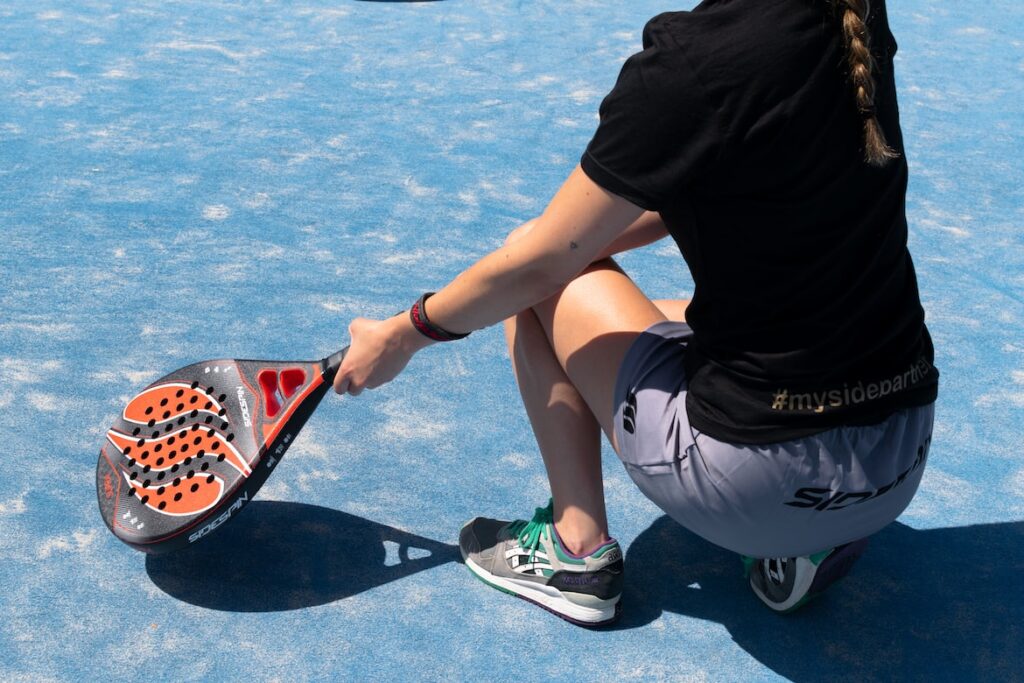The Role of Grip and Swing Mechanics in Your Padel Forehand and Backhand
3 min read
The Role of Grip and Swing Mechanics in Your Padel Forehand and Backhand
Greetings, fellow padel enthusiasts! Today, we are going to delve into the art of the padel forehand and backhand strokes. Whether you’re a seasoned player or just starting out, understanding the proper grip and swing mechanics can greatly enhance your performance on the court. So, grab your racket, let’s dive in and unlock the secrets to mastering these essential shots!
The Grip: Your Padel’s Best Friend
While it may seem like a simple aspect of the game, the grip you use on your padel racket can make all the difference in how well you execute your forehand and backhand strokes. Let’s start with the forehand grip.
For a powerful and accurate forehand shot, hold your padel racket with what’s known as the continental grip. Imagine shaking hands with the racket; your index knuckle should be at bevel 2 (the top bevel of the racket handle). This grip gives you better control over the shot and allows for a smooth wrist movement during your swing.
Now, let’s shift our focus to the backhand grip. There are a few different options here, but the most commonly used are the Eastern backhand grip and the Semi-Western backhand grip. The Eastern grip has your index knuckle at bevel 1, while the Semi-Western grip has it between bevels 1 and 2. Experiment with both to find which one suits your playing style and provides the best results for your backhand shots.
The Forehand Swing: Power and Precision
Ah, the forehand swing – a thing of beauty when done right. To execute a solid forehand shot, start by positioning your body perpendicular to the net with your non-dominant shoulder facing forward. As the ball approaches, take a step forward with your front foot and rotate your hips and torso towards the net.
As you swing the racket towards the ball, focus on keeping a relaxed grip, allowing your wrist to naturally snap at the moment of contact. This snapping motion generates extra power and topspin on the shot, making it a force to be reckoned with. Remember to follow through with your swing, aiming for a smooth motion that ends over your opposite shoulder.
The Backhand Swing: Adaptability and Accuracy
Now, let’s switch gears and talk about the backhand swing, a stroke that often poses a challenge for many padel players. The key to mastering the backhand lies in a combination of positioning and technique.
Start by positioning yourself slightly sideways to the net, with your non-dominant shoulder facing forward. As the ball approaches, make a small sideways step with your front foot while pivoting on your back foot. This movement will help you generate rotational force, adding power to your shot.
As you swing the racket towards the ball, focus on maintaining a compact motion, using your non-dominant hand to guide the shot. Keep your wrist firm and make contact with the ball slightly in front of your body, allowing for better control and accuracy.
Conclusion
So there you have it, padel fanatics – the role of grip and swing mechanics in your forehand and backhand strokes. By understanding and mastering these aspects of the game, you’ll be well on your way to becoming a formidable force on the padel court.
Remember, practice makes perfect, so grab a friend, head out to the court, and put these tips into action. Before you know it, you’ll be executing powerful forehands and accurate backhands that leave your opponents speechless. Enjoy the journey, and may your padel forehand and backhand flourish!






